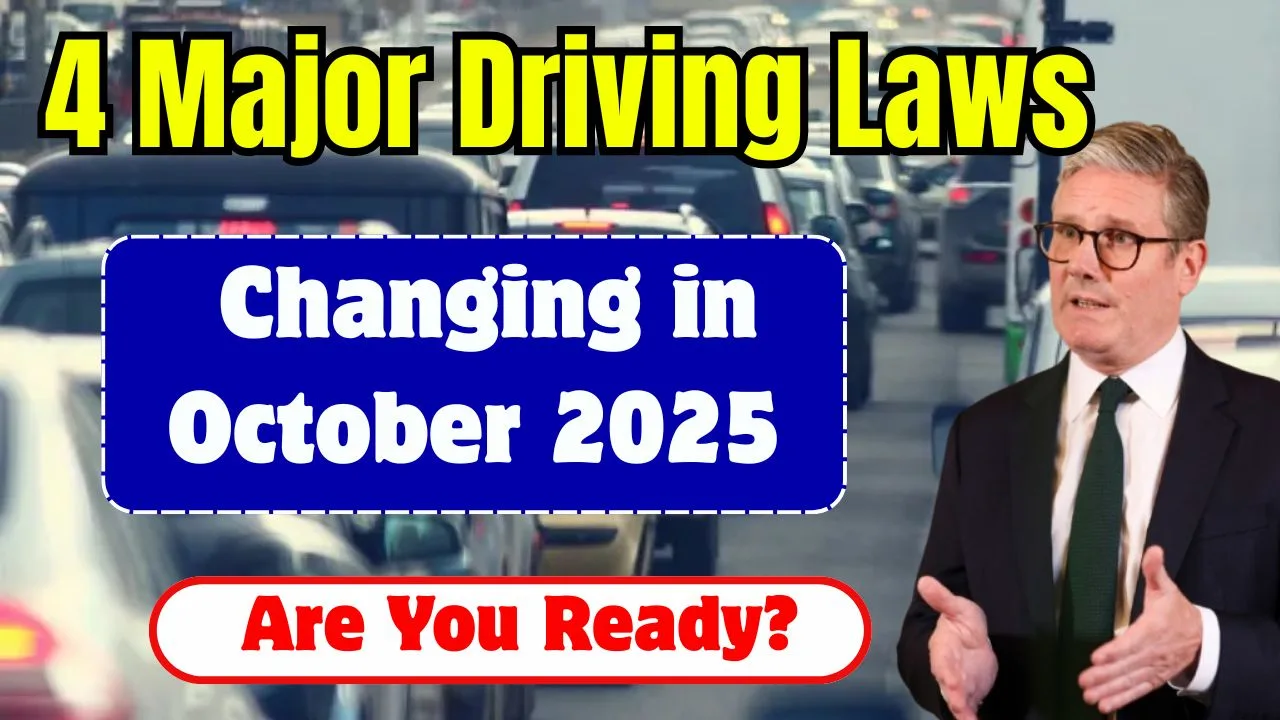Big changes are coming to the roads of the UK this October. If you drive, you’ll want to know Driving Laws 2025. What’s shifting rules around drink-driving, vision tests, insurance, and enforcement are all on the table. These updates aren’t small tweaks; they’re meant to make our roads safer, clearer, and more accountable.
Let’s get straight to it: under Driving Laws 2025, several proposals are poised to reshape how we drive and how rules are enforced. In this post, I’ll walk you through the four major changes expected in October, explain how they’ll affect everyday motorists, and share what you can do now so you’re ready when the shift happens.
What’s Changing under Driving Laws 2025?
The UK government is set to roll out updated driving regulations to enhance road safety and accountability. With Driving Laws 2025, there’s a strong focus on cutting down drink and drug driving, increasing health checks for ageing drivers, cracking down on uninsured vehicles, and using advanced tech like AI-powered cameras for real-time enforcement. These changes will not only affect how you drive but also how offences are detected and punished. If you’re on the road, understanding these rules could help you avoid hefty penalties and license issues. Let’s break down each of the four major updates set for October.
Overview Table
Here’s a breakdown of what’s coming in October under Driving Laws 2025 the proposals that could change how you drive, how you’re checked, and how violations are dealt with:
| Change Area | What’s Being Proposed | What It Means for You |
| Drink‑drive limit & stricter detection | Lowering the legal alcohol limit, easier drug‑driving tests | Even slight drinking could now be illegal, and roadside drug tests more common |
| Vision & medical checks for older drivers | Compulsory eye tests for drivers over 70 every renewal | Some older drivers may lose licence if they fail tests |
| Insurance & uninsured vehicle penalties | Heavier fines, stricter checks, tougher consequences | Driving uninsured could lead to serious penalties |
| Automated enforcement & tech tools | More AI cameras, digital checks, stricter seatbelt rules | Fewer areas of “leniency,” more tech catching non‑compliance |
1. Lower Drink‑Drive Limit & Expanded Detection
One of the most talked about changes is the potential tightening of drink-driving laws under Driving Laws 2025. The government is considering lowering the legal alcohol threshold in England and Wales from 35 micrograms of alcohol per 100ml of breath to 22 micrograms bringing it in line with Scotland and many European nations. This would mean that even moderate drinking could push drivers over the limit.
Alongside that, the proposals include allowing police to use roadside saliva tests for drug-driving, instead of relying solely on blood tests. That lowers the barrier to prosecution and increases the likelihood of detecting drug-impaired drivers. If passed, these changes would signal that even small amounts of alcohol or certain drug use could carry serious legal risk.
2. Compulsory Eye & Medical Checks for Older Drivers
Another major plank of the new rules is enhanced health screening for older drivers. Currently, drivers over 70 must renew their licence every three years, but must self-declare any serious medical issues. Under Driving Laws 2025, that may change. Mandatory eye tests for drivers over 70 could become a requirement at each renewal, and failing those tests may lead to the loss of driving privileges.
Proposals also include stronger medical checks such as screening for cognitive issues or conditions like dementia for those renewing licences later in life. These changes aim to shift the burden from self-reporting to verified testing, potentially improving road safety among older age groups.
3. Insurance & Penalties for Uninsured Driving
Driving without insurance is already illegal, but under Driving Laws 2025 the consequences could get much harsher. Expect heavier fines and more active enforcement. Also, non-compliant or uninsured vehicles may be more aggressively targeted by automated systems and cross‑referenced databases, making it harder to slip through gaps.
The idea is to reduce the prevalence of uninsured driving by making it riskier for offenders. If you drive, ensuring your insurance is fully up to date and compliant will be more critical than ever.
4. Automated Enforcement & Stricter Compliance
Technology is becoming a bigger force on UK roads. Under the new proposals, Driving Laws 2025 could see a wider deployment of AI cameras that detect behaviors like mobile use, not wearing a seatbelt, and other traffic violations. The cameras may operate 24/7 across more areas, leaving fewer blind spots for enforcement.
In addition, seatbelt rules may be tightened drivers and passengers could both accrue penalty points for non‑compliance. Digital checks and cross-referenced databases may make it harder to contest infractions based on human error or ambiguous evidence.
Another technical change: the maximum authorised mass (MAM) for zero-emission vehicles driven on a standard category B licence has been increased to 4,250 kg. That means drivers can legally drive somewhat heavier electric or hydrogen vehicles without needing a higher‑category licence. This change supports the broader shift toward greener vehicles.
What You Should Do Now
First, review your drinking habits if even a small drink could push you past a new limit, adjust accordingly.
Second, if you’re over 70 (or approaching that age), plan ahead for potential eye tests or medical examinations before licence renewal.
Third, double-check your vehicle insurance and ensure it’s fully compliant.
Fourth, get in the habit of always wearing your seatbelt and staying off your phone while driving, especially since cameras may catch you automatically.
Finally, if you drive or plan to drive heavier EVs or hydrogen vehicles, take note of the new MAM limit change and see if your licence covers you.
Final Thought
These proposed changes under Driving Laws 2025 mark a serious shift in how driving is regulated in the UK. The aim is clearer safety standards, stronger enforcement, and less room for fault. If you adapt early, review your habits, ensure your documents are in order, and get ahead of medical checks you’ll be in a much better position to stay on the right side of the law. Let me know if you want a city‑wise breakdown (London, Scotland, etc.) or a driving guide tailored to your region.
FAQs
These proposals are expected to come into force in October 2025, though implementation and enforcement may roll out in stages.
Not automatically. Failing a test may trigger further evaluation, and only persistent failure would lead to revocation.
Possibly. With the proposed lower limit, even moderate drinking might exceed the new legal threshold.
They’re targeted for England and Wales primarily, though some measures like vision tests could be adopted more widely in the UK.
Yes, dispute processes will remain in place, but with more tech processing, cases may be more rigidly handled.







